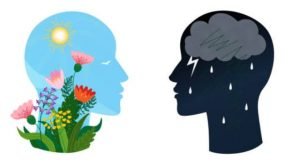what causes sadness | Fact or fiction | Seasonal Affective Disorder?
Have you ever felt gloomy, sad, and kind of depressed when the seasons change? Have you ever thought that there may be a reason for that? Seasonal Affective Disorder (SAD) is a type of depression that is related to the changing of the seasons.
This is the period between the beginning of autumn to the end of winter months for most people. If you’ve never experienced it, you probably know someone that has. It is one of the most common types of depression.
But is it an actual thing, or are people using it as an excuse?
Let’s talk about being SAD
In most cases, people fall under SAD’s umbrella from October to April, in other more minor cases from April to September. Though a rare occasion, some people even experience it all year long. So that brings up the question of authenticity to this so-called depression. Before that, let’s point out the symptoms, which in most cases are:
- Feeling depressed for most of the day
- Losing interest in activities that were fun before that
- Bad sleep
- Less energy
- Overall feeling of lethargy
It may seem that some of these are just excuses to procrastinate and blame the “winter blues” for not wanting to go out of bed.
But a further insight on the topic sheds a different light. Let’s just put it this way – In more severe cases, there are even worse symptoms, such as finding it hard to concentrate as well as having suicidal thoughts.
What can cause SAD
Although there is no medical or professional conclusion on the actual cause, there are different opinions.
Your biological clock, or circadian rhythm, may be involved. For example, the reduced sunlight in the autumn-winter months may interfere with a person’s biological clock. Lack of sunlight may also cause a drop in serotonin levels that may lead to depression. The changing of the seasons could affect the melatonin levels in the body that play a major role in sleep patterns and mood.
A couple of unpopular opinions
One of the less popular opinions on the matter is that SAD may run in the family. Family members that have struggled with it could pass it on to the next generations, especially if the mother has struggled with SAD throughout pregnancy.
Having a bipolar disease could possibly play a significant role in the development of SAD. Professionals don’t place their chips on this theory because bipolar disease is, by itself, a clinical type of depression disease. Last but not least, statistically, SAD occurs in people that live far from the equator. This may be because of the longer summer days and decreased sunlight during the winter.
How to treat it
Regardless of how severe your specific case is, the matter shouldn’t be taken lightly, and you are best off finding means of treating the SADness. Here are some of the best ways to do so: Light therapy is the most famous treatment for SAD. It’s a bright light that people get exposed to every day during the light-deprived months. A person sits in front of a big lit-up box that shines them with 10.000 lux every day for 30 – 45 minutes. It’s usually done early in the morning.
Psychotherapy, also known as Cognitive behavioral therapy or “talk therapy”, is a type of therapy that helps people to cope with difficult situations.
It is considered that this type of therapy is more efficient when it comes to long-term effects. This is because its main objectives are to maintain a sane and safe environment for the recipient and get him out of the house.
Medication is a commonly used practice when it comes to any type of depression. People are divided on whether pills are the way to go when struggling with any type of depressive ignited disease.
And the most obvious way to go – vitamin D. Nutritional supplements of the vitamins could help improve the symptoms. Although some specialists find it inefficient, especially compared to the other three options, it is still considered to be a way to go.
To Wrap It Up
Seasonal affective disorder, or SAD for short, is a type of depressive mood that occurs at the same time every year. It’s most common in people living above 30 degrees latitude north and south (i.e., North America).
The seasonal changes are the primary contributor to this phenomenon because with shorter days comes less sunlight which can cause an imbalance in your brain chemicals like serotonin. But don’t worry! There are things you can do to help alleviate these symptoms before they get worse.
Some helpful strategies include taking vitamins D3 and B12 daily, drinking more water throughout the day, eating healthy foods, and exercising regularly. However, remember that the most powerful tool to deal with this is to be cognitive about it!
You can consciously DECIDE to be stronger than your environment and that happens once you realize that you don’t HAVE TO follow the main sequence.
Stay happy.













